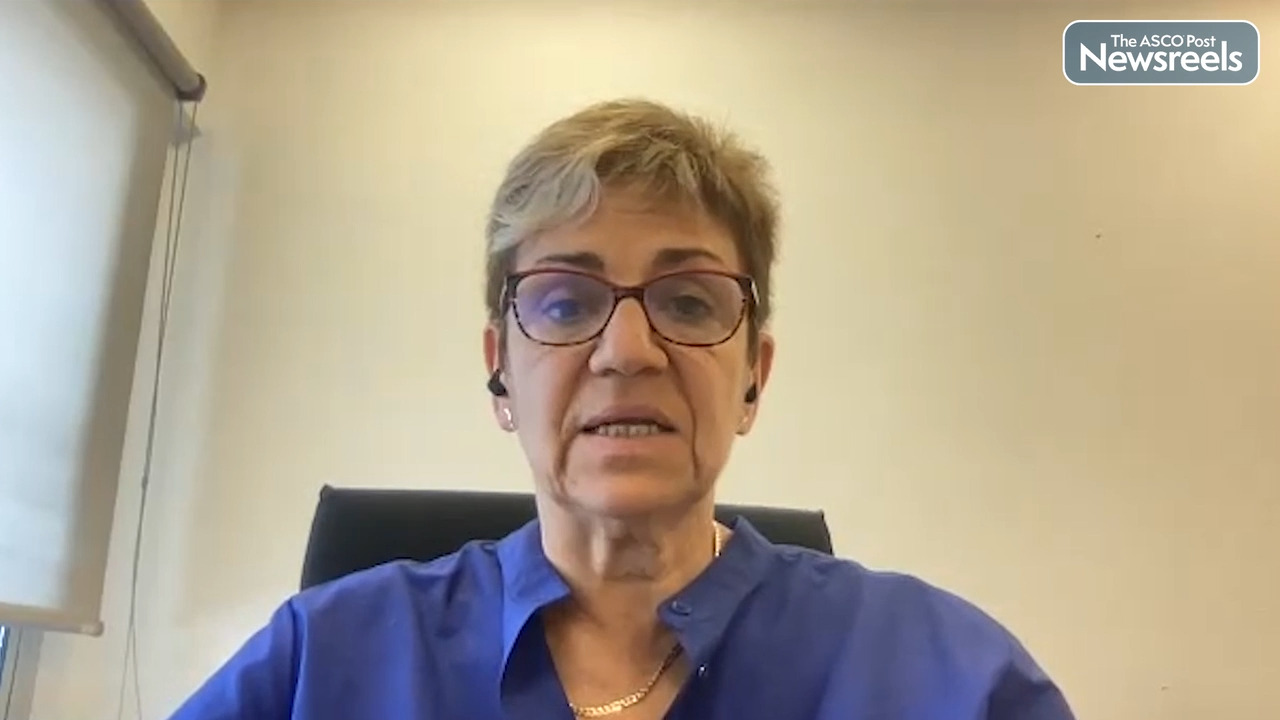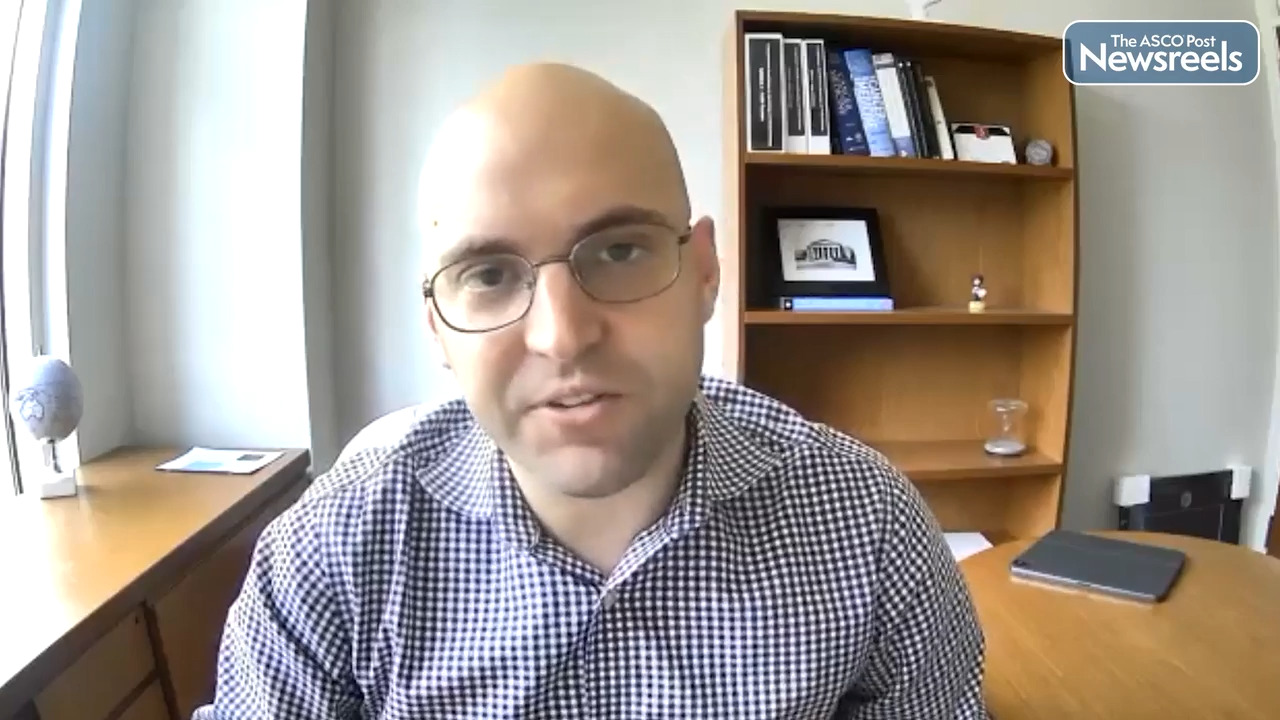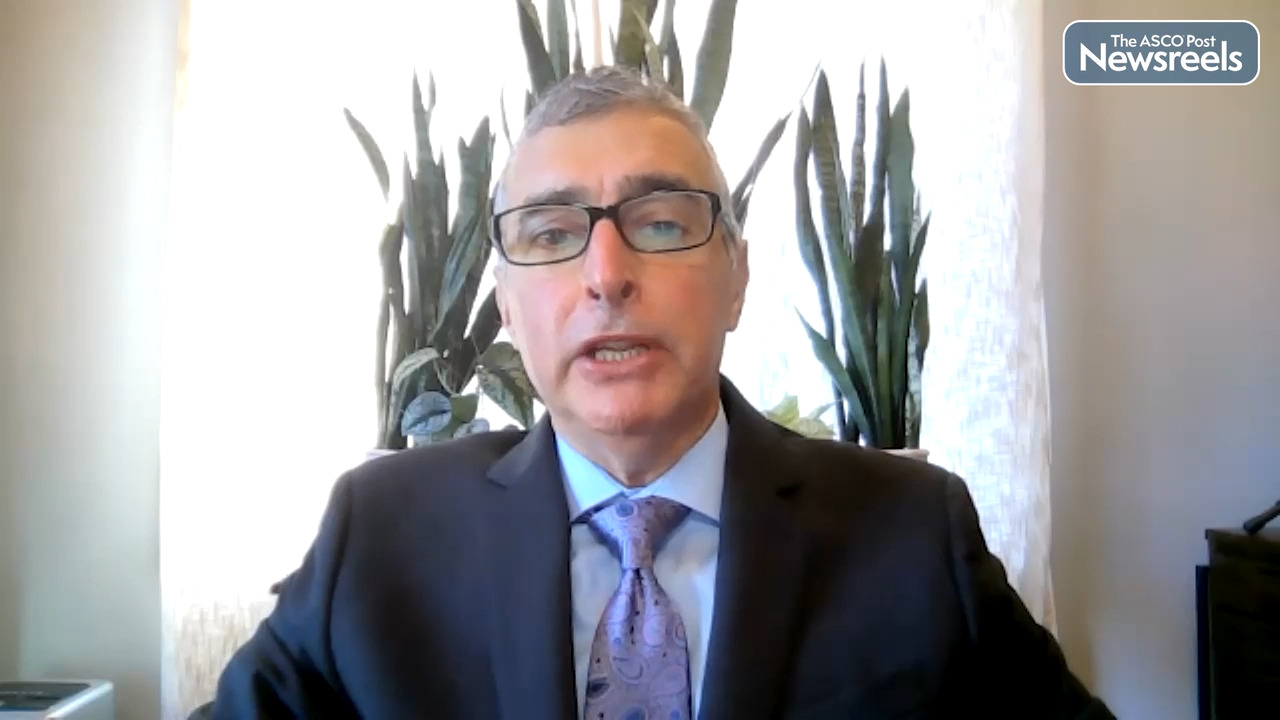Transcript
Disclaimer: This video transcript has not been proofread or edited and may contain errors.
Glofitamab is a full-length CD20/CD3 bispecific T-cell engaging antibody, which is unique from its two to one structure, which delivers potency. It's given intravenously after a single dose of obinutuzumab a week later. We start with glofitamab 2.5 milligrams, then 10 milligrams, and then 30 milligrams, and then it's given once every three weeks for 12 cycles.
We presented data of this approach in 154 patients with relapsed and refractory large B-cell lymphoma after at least two prior lines of therapy. We included patients with transformer lymphoma, double-hit lymphoma, and diffuse large B-cell lymphoma, NOS and also primary mediastinal B-cell lymphoma. In this population, there is a real area of need. Although CAR T cells are available, not everyone can access CAR T cells. We included patients, however, who'd previously had CAR T cell. In fact, 30% of the population that was recruited had been exposed to CAR T cell, and almost all of those patients had been refractory.
Indeed, 80% of the overall population were refractory to prior therapies when they went into this trial and were exposed to glofitamab. Strikingly then, we were able to demonstrate a complete remission rate of 39.4%. Complete remissions are crucial to deliver durable remissions in large B-cell lymphoma, and we saw that approximately 80% of patients had retained their complete remission at 12 months. This is striking because glofitamab is given for a fixed course. In fact, it's unique amongst the bispecifics in that way. Some bispecifics are given indefinitely, whereas glofitamab is given for a fixed course of 12 cycles. So when we looked at patients in 12 months and saw that they're retaining their complete remission, this was clinically significant.
There were some toxicities which relate to the mechanism of action of the bispecific antibodies. We saw cytokine release syndrome in just over 60% of patients, but this reduced to 50% of patients when we used dexamethasone routinely as a premedication during the step-up phase. Cytokine release syndrome was almost universally low-grade beyond the first dose of treatment. In fact, when we used dexamethasone in this way, we saw no grade 2 cytokine release syndrome beyond the first dose of glofitamab.
We also presented a population of patients who'd been recruited earlier during the phase I trial treated for the same inclusion criteria, but at a lower dose than the phase II dose of glofitamab. This meant that we could look at what happens to patients who have complete remissions who were followed for beyond the median 12 months in the pivotal cohort. In this supportive cohort, we had a median follow up of 2 years, and we had 35 patients who'd achieved a complete remission. What we saw is that very, very few patients relapse beyond the 12 month mark. So when we take these two pieces of information together, we can conclude that glofitamab delivers a clinically significant rate of complete remissions, that the therapy is deliverable, with an acceptable rate of cytokine release syndrome that is very manageable, and also that these complete remissions are durable even though the treatment stops after 12 cycles given 3 weeks apart. So at about the 9 month mark.
This means that this is a really important treatment option for patients. If this becomes widely available, it can be applied to patients who have relapsed or refractory disease, it can be applied to patients who relapse after CAR T-cell therapy, and it's deliverable in a way that can be easily managed by patients and physicians as an off-the-shelf treatment.




